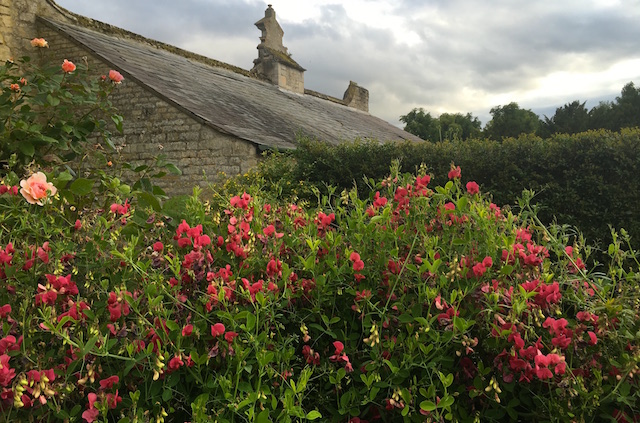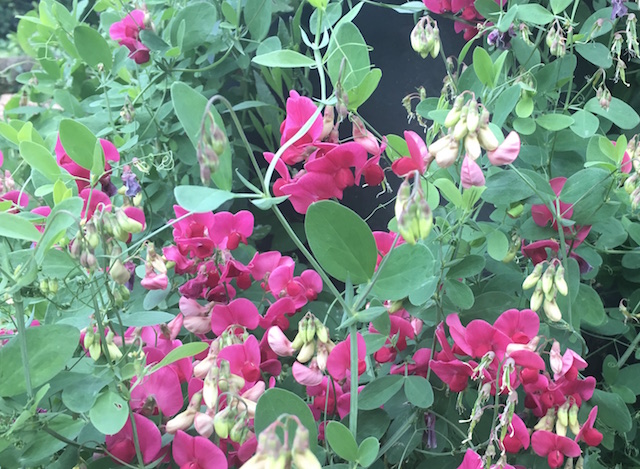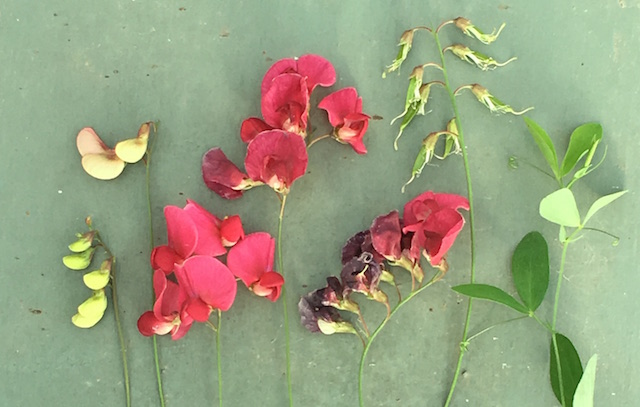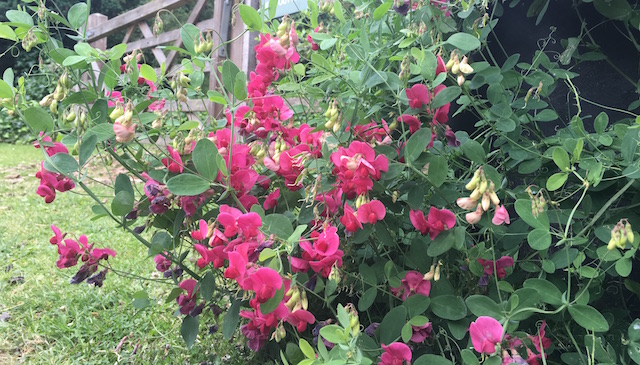Persian Everlasting Pea
The Persian Everlasting Pea.

Lathyrus rotundifolius
‘You’ll never sell it’ said nurseryman Tim as he delivered plants for our visitors back in the day. Sure enough, by September, when all the gifted 1 litre container plants had gone to kind homes; two scraggy looking pots were left. Lathyrus rotundifolius, also called the Persian everlasting pea, doesn’t take kindly to being restricted so we released them into the border along the pickery fence and rather forgot about them.
Next summer something remarkable happened. Beautiful twining stems rose from the ground and romped over the fence (politely leaving space for other climbers.) By July, the plant was smothered in pink flowers that contrasted beautifully with the foliage. It has been one of the most asked about plants in the garden ever since.

Habit and provenance:
Hailing from the countries around the Black Sea and into Iran, the Persian everlasting pea grows in meadows with other leguminous plants. A member of the prettily named sub-family Papilionaceae (meaning ‘butterfly–like’), it uses tendrils to climb and support itself and growth is prolific between April and June.
The flowering stems form racemes of 3+ flowers, cream in bud and darkening as the flowers open. The flower colour is often described as brick-red, although in our experience that is the colour the camera lens sees. On our plants, the petals are a deep pink with increasing blue tones as the flower ages. There is no discernable scent but that doesn’t stop insects including bees foraging in the flower heads.

How to grow:
Lathyrus rotundifolius plants are hardy (H7 on the new RHS ratings system), herbaceous perennials. They grow best in reasonable soil in full sun or dappled shade. They need something sturdy to climb and our Im fence is the perfect vehicle. If trained the plant may make 1.5m.
Despite its aversion to small pots, Lathryus rotundifolius makes a well behaved addition to large permanently planted containers. We have some outside the shop door and they climb and flop over the edge with great charm.

As the top growth dies back in autumn the stems can be cut back to ground level and used on the compost heap. In the spring, bulbs such as tulips, crocuses and snowdrops fit snugly around the roots and will give you lots of colour until the pea starts to grow again.
Mary Keen describes the roots as ‘wandering’, which is about right. Propagate from Irishman’s cuttings (a piece of stem with roots on) in late spring. The seed tends not to set in northern areas and germination can be slow.
We offer pots of this pea for sale in June and early July, if you would like to reserve one please contact the office.